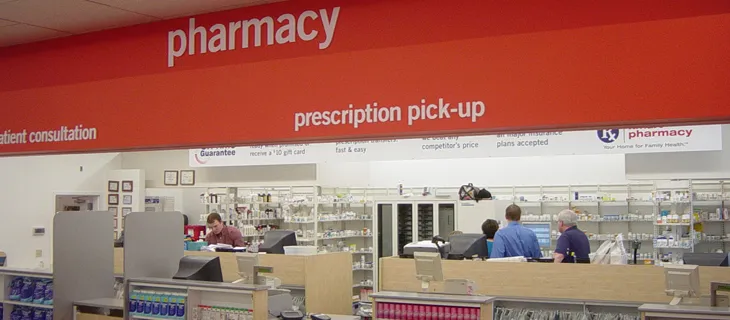
Steven Robins
Now is the time for Food and Drug Administration reforms designed to dramatically increase the number of prescription-to-O-T-C switches in the U.S. At a time when both political parties are pushing for transparency and pricing reform, the opportunity to align multiple agendas that benefit consumers, retail pharmacies and the health care system overall is too good to pass up.
By making it easier for any company to sponsor the switch of a drug after patent expiry, access the originators’ data package and secure the same limited exclusivity (if applicable), we could not only significantly bend the cost curve but also increase access for today’s prescription patients, who either do not adhere to their medications or go to great lengths to source products from other countries due to cost.
So, while we all wait for the next official White House announcement, or less official tweet, regarding prescription drug prices, let’s use our collective time to look at the case for dramatically increasing switches. The New England Consulting Group (NECG) believes that multiple stakeholders — including Big Pharma, hospital systems and doctors — would benefit, but I will focus this discussion on the benefits to chain drug stores and consumers.
It is also important to separate the diagnosis from a prescription. We believe that payers would also support this type of reform even if they continue to reimburse patients for the retail cost of O-T-Cs, assuming there is an initial diagnosis from a doctor. For consumers who do not have a diagnosis, there would be no reimbursement.
Please note that we are not advocating that drugs switch before their patents expire, nor are we saying every drug can switch (narcotics and SSRIs are good examples of drugs that should remain prescription). But there has never been a better time to examine the potential — category by category and drug by drug — to drive switch.
Here are the major tenets of the argument:
• Branded and generic O-T-C drugs are less expensive.
• The cost of medications hurts adherence (and therefore drives other costs).
• In-store and virtual resources make it possible today to support more O-T-C drugs.
• Decreased prescription drug spending frees up resources that can be refocused.
• Chain drug stores win when more products go O-T-C.
O-T-Cs are less expensive
According to the Consumer Healthcare Products Association (CHPA), O-T-Cs save our system $25 billion in prescription drug costs annually. The savings represent about 7.5% of total prescription drug spending. Imagine expanding O-T-C offerings to include time-tested therapies for diabetes, hypertension, cholesterol and a variety of other maintenance-focused chronic conditions.
To help illustrate this, NECG analyzed several products that have already switched and looked back at the relationship between branded prescription drug pricing, today’s generic pricing and the O-T-C prices of branded and store brand products. In the cases we looked at, cost savings ranged from 86% to 93%.
Adherence will improve
According to the Kaiser Family Foundation Health Tracking Poll, nearly one in three adults reported not taking their medication as prescribed due to cost. This includes a group that skipped filling prescriptions at times, and some who cut their medication dosage without telling their doctor. While this behavior may save money in the short term, the cost impact of nonadherence goes well beyond the cost of medication only. Avoidable emergency room visits and hospital admissions have a much larger impact on the system.
In fact, CHPA’s total estimate of savings to the health care system is $102 billion, of which $77 billion is attributed to savings from other parts of the health care system that are avoided due to O-T-C medication use.
Incenting lower-cost care already exists in our health care system. Pharmacy benefit managers create conditional reimbursements today by requiring patients to step through less expensive therapies before they will reimburse more expensive ones. Insurers also pay orthopedic surgeons more to operate at lower-cost ambulatory surgery centers rather than in expensive hospital operating rooms. At the same time, for retailers, adherence drives volume as more units are purchased, often without requiring pharmacy staff time.
In-store and virtual resources
Chain drug stores have continued to evolve over the past two decades, increasing the services consumers have access to while in store. It is hard to believe, but MinuteClinic is nearly 20 years old, and while retail clinics have yet to reach their full potential, they continue to expand the ways in which they help consumers access primary care resources and get support with immunizations, simple tests and other frontline medical care.
Moreover, while there are already a number of these clinics (estimated at 2,800-plus), the newest iterations are taking in-store health even further. Target Corp.’s partnership with Kaiser, CVS Health’s expansion of the HealthHUB test and Walgreens’ Healthcare Clinic data integration with a number of local health care systems are examples of the increasingly sophisticated methods that exist to support consumers as patients.
Beyond the physical, virtual support is increasing steadily among the U.S. population. Consumer-centric apps like Mango and Sugar Sense, as well as those available through many chain drug retailers, can store lists of drugs and supplements being taken. While not yet all the way to bright, virtual support presents a unique opportunity to capture the drug interaction data that can be of critical importance in ensuring consumers’ well-being.
It is important to note that this issue exists for O-T-Cs in today’s environment as well, since the pharmacist may be unaware of the O-T-C products and supplements patients are taking. Increasing the O-T-C components of a consumer’s treatment portfolio will raise awareness that consumers need to look at their entire regimen.
The ease of use and the increasing popularity of combination retail and therapeutic apps hold a tremendous amount of promise for improving consumers’ top-of-mind awareness.
Refocused savings (time and money)
One of the biggest issues facing the pharmacy section of drug chains today is the need for reform around the negotiated prices, price concessions and opaque performance standards that payers require in order to get certain payments. At the same time, store brand O-T-Cs typically offer retailers a healthy margin despite the lower cost to the consumer.
Together, DIR reform and expanded O-T-C access can be a significant profit driver, without increasing total drug costs. Further, pharmacy staff will have more time to interface with patients who are asking for help or are being treated with newer therapies. Ultimately, this creates greater value for the chain and the consumer. It also serves as a point of difference from e-commerce-only players.
O-T-Cs a win for chain drug
The bottom line for chain drug stores is that an increase in O-T-Cs creates a tremendous opportunity to win with consumers by leveraging both the merchandising expertise of the front end and the sage counsel of the pharmacist. Competitors like specialty/mail-order prescription and pure e-commerce cannot compete with all of the tools that chain drug stores have at their disposal. Merchandising condition-based solution sets, leveraging loyalty data, expertly promoting O-T-Cs and delivering education around, and through, the pharmacy are all strengths of the channel. Further, store brands are a proven tool for chain drug stores to drive margin while offering consumers strong value.
While both political parties push Big Pharma, now is the perfect opportunity to help shape the relatively new FDA Commissioner Norman Sharpless’ agenda. Expanded O-T-Cs are a winner for chain drug stores. Maybe we should tweet the commissioner about it: #switchit
Steven Robins is a managing partner and principal at the New England Consulting Group.









